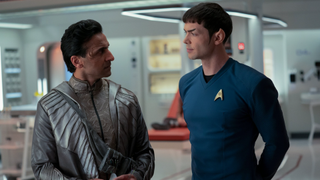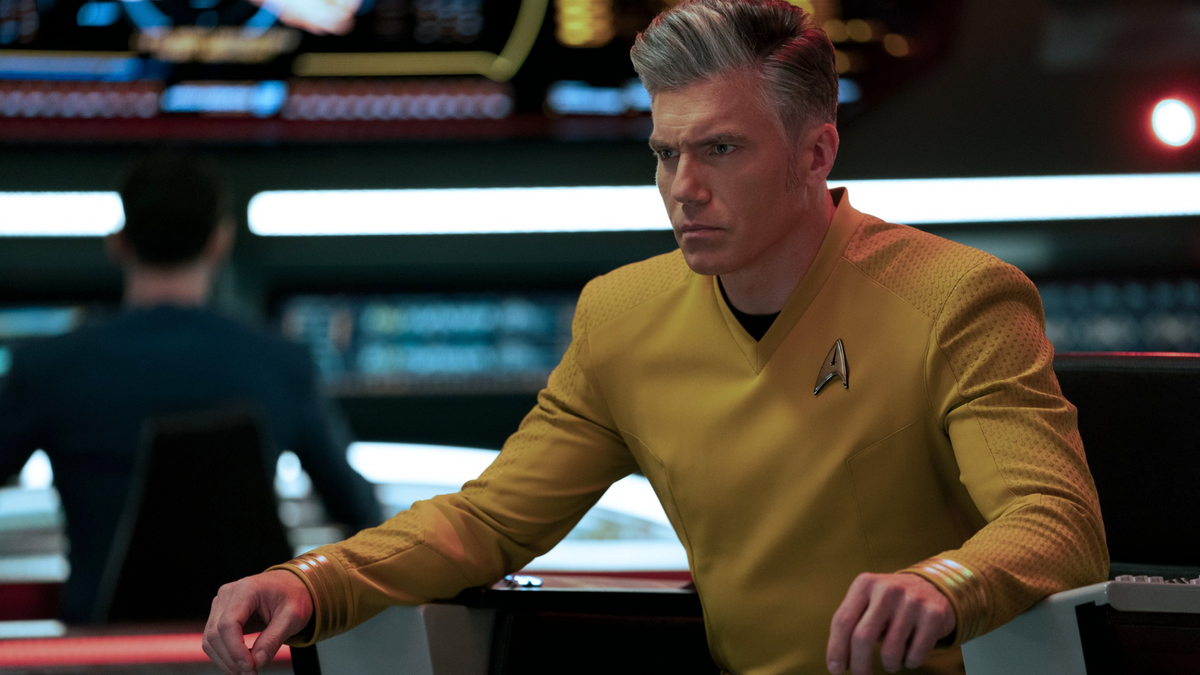12DOVE Verdict
While it’s a solid introduction to some classic Trek themes, fans may find the story’s beats and twists a little too familiar. The good thing about Strange New Worlds, however, is that even when it’s on autopilot, the quality of the cast and the writing ensure it’s never less than watchable.
Why you can trust 12DOVE
Warning: This Star Trek: Strange New Worlds season 1, episode 6 review contains major spoilers – many of them set to stun. Boldly go further at your own risk…
If Paramount Plus was relaunching their fleet of Star Trek shows again, they’d surely have made Strange New Worlds the first series out of Spacedock. While Discovery, Picard and Lower Decks have all – to various degrees – relied on viewers’ knowledge of earlier iterations of Trek, the voyages of Christopher Pike’s starship Enterprise feel like the ideal introduction to the franchise and what’s made it tick for over 55 years.
Over the course of its early missions, Strange New Worlds has developed a knack for putting a slick, modern spin on classic Trek tropes, such as the first contact scenario, interstellar warfare, and even ship-based comedy. Now, this sixth outing explores the commonly recurring theme of Starfleet encountering an alien race with morally dubious practices, while also giving the ship’s captain an excuse for a spot of alien romance.
The problem with ‘Lift Us Where Suffering Cannot Reach’, however, is that the show’s now-trademark snappy dialogue, slick set design, and wonderful cast aren’t quite enough to mask the over-familiarity of the story. In other words, if you’ve watched a few episodes of the original series or The Next Generation, you’ll have a pretty good idea where this one’s going before it’s even made it to the opening credits.
It begins – as Star Trek stories often do – with a distress call. A Majalan vessel is being pursued by a hostile ship which, despite being completely outgunned by the flagship of the Federation, is foolhardy enough to turn its phasers on the Enterprise. Starfleet protocol – along with Pike’s conscience – compel the crew to intervene, and after shooting down the aggressors, they beam the survivors on board.
By some cosmic coincidence, one of them is Alora, a woman Pike rescued from a spot of bother with a pulsar ten years earlier. It doesn’t take long for sparks to start flying in the transporter room.
“You have bad luck with shuttles,” says Pike.
“Or good, depending on how you look at it,” Alora replies, hinting that their relationship isn’t just platonic
The most interesting member of the party, however, is a child known as the “First Servant”. Extending a long tradition of kids in Star Trek (and sci-fi in general) with disarmingly high intelligence, he’s a holy figure in Majalan culture, the embodiment of their maxims of “science, service, sacrifice” who’s left his family behind in favor of the so-called greater good. As such, the boy must be protected at all costs, to the point where his stuffy guardian, Elder Gamal, won’t let Dr M’Benga and Nurse Chapel use their primitive “abattoir” tools to treat his injuries.
The fact that this technologically advanced civilization has never appeared in Star Trek before is an early indicator that something sinister may be lurking beneath their friendly surface. After all, any race that can live in floating fairytale castles – their capital city looks like a cross between Naboo in The Phantom Menace and something from Flash Gordon – and use holographic computer terminals would surely have become a major asset to the Federation under normal circumstances. M’Benga even realizes that their medical tech has the potential to cure Rukiya – the terminally ill daughter he keeps alive in the medical transporter’s pattern buffer – though Gamal’s initial refusal to share Majalan tech with outsiders is an early indicator that this is a species that doesn’t play well with others.
It’s ultimately Cadet Uhura who gets to the heart of the problem. One of Strange New Worlds’ smartest moves has been using the rookie’s on-the-job education as an introduction to key crew members and areas of the ship. This week she’s under the tutelage of security chief La’an, whose core lessons – among them the memorable “threats never take breaks” – will surely be adorning t-shirts before long.
These security guidelines intertwine perfectly with the Majalan plot. Most pivotal on the list is lesson 6, which concerns knowing how and when to bend the rules. La’an realizes that something isn’t quite right in the wreckage of the ship Uhura shot down in the episode’s cold open – in hindsight, it seems a tad harsh to ask the work experience to disable an enemy craft – so, with the ship’s translators out of bounds during an unofficial investigation, asks the young linguistics expert to have a deeper, eyes-only look at their communications. Despite Alora’s claims that the residents of Prospect VII are an enemy colony, Uhura realizes that the similarities in their respective languages can mean only one thing – they’re descendants of Majalan. It’s subsequently revealed that they left this apparent utopia to escape the dark goings on in the background, in a plot line that shows remarkable echoes of the Ba’ku and Son’a in Star Trek: Insurrection.
Uhura’s impressive detective work proves slightly annoying for Pike, because it interrupts his very intimate diplomatic sessions with Alora. When their pillow talk shifts to chat about the future – and Pike’s own, well-publicized grisly fate – she offers the planet’s services for medical assistance. Anyone who’s seen original series two-parter ‘The Menagerie’ will be wondering if this is where the idea for his telepathic recuperation was seeded.

Ultimately, however, Pike’s inherent decency means he was never going to accept Majalan hospitality for long. Despite his Starfleet training, he finds it impossible to disguise his disgust at the revelation that the First Servant’s “ascension” involves plugging him into the city’s computer mainframe to become the central processor of the machines that keep the city hovering above the lava and acid on the planet’s surface. Seeing invasive wires attach themselves to the kid is a genuinely brutal moment, and the boy’s fear is palpable as we watch his self being lost to the machine forever – the fact that Alora claims they’ve been looking for a more humane alternative doesn’t make the scenes any easier to accept.
The barbaric nature of the ritual makes you see the actions of Elder Gamal in an entirely different light. Having sacrificed everything to team up with Prospect VII to rescue the boy, he could have been the hero of the episode had everything gone to plan – indeed, he must have been inwardly cursing the well-meaning Enterprise crew for thwarting his ingenious scheme to fake the First Servant’s death.
But that’s the point of the episode. The Kobayashi Maru – the no-win scenario – is one of Star Trek’s longest-standing themes, but it’s rarely been explored as subtly and cleverly as it is here. The Enterprise was duty-bound to work out what happened to the First Servant after his abduction from the transporter room, yet their typically diligent work essentially sentenced the boy to ‘death’. And once the process of ascending had begun, standard protocols ensured Pike was powerless to intervene – beyond, presumably, putting Majalan on some kind of Federation blacklist.
Even when Strange New Worlds isn’t firing at maximum warp, it remains a brilliantly made slice of weekly sci-fi action. ‘Lift Us Where Suffering Cannot Reach’ is just that little bit too familiar to engage as much as its predecessors.
Star Trek: Strange New Worlds is currently airing now in the US on Paramount Plus. The streaming service launches in the UK on June 22. For more, check out our guide to the Star Trek timeline.
More info
| Genre | Sci-fi |
Richard is a freelancer journalist and editor, and was once a physicist. Rich is the former editor of SFX Magazine, but has since gone freelance, writing for websites and publications including 12DOVE, SFX, Total Film, and more. He also co-hosts the podcast, Robby the Robot's Waiting, which is focused on sci-fi and fantasy.
Most Popular

